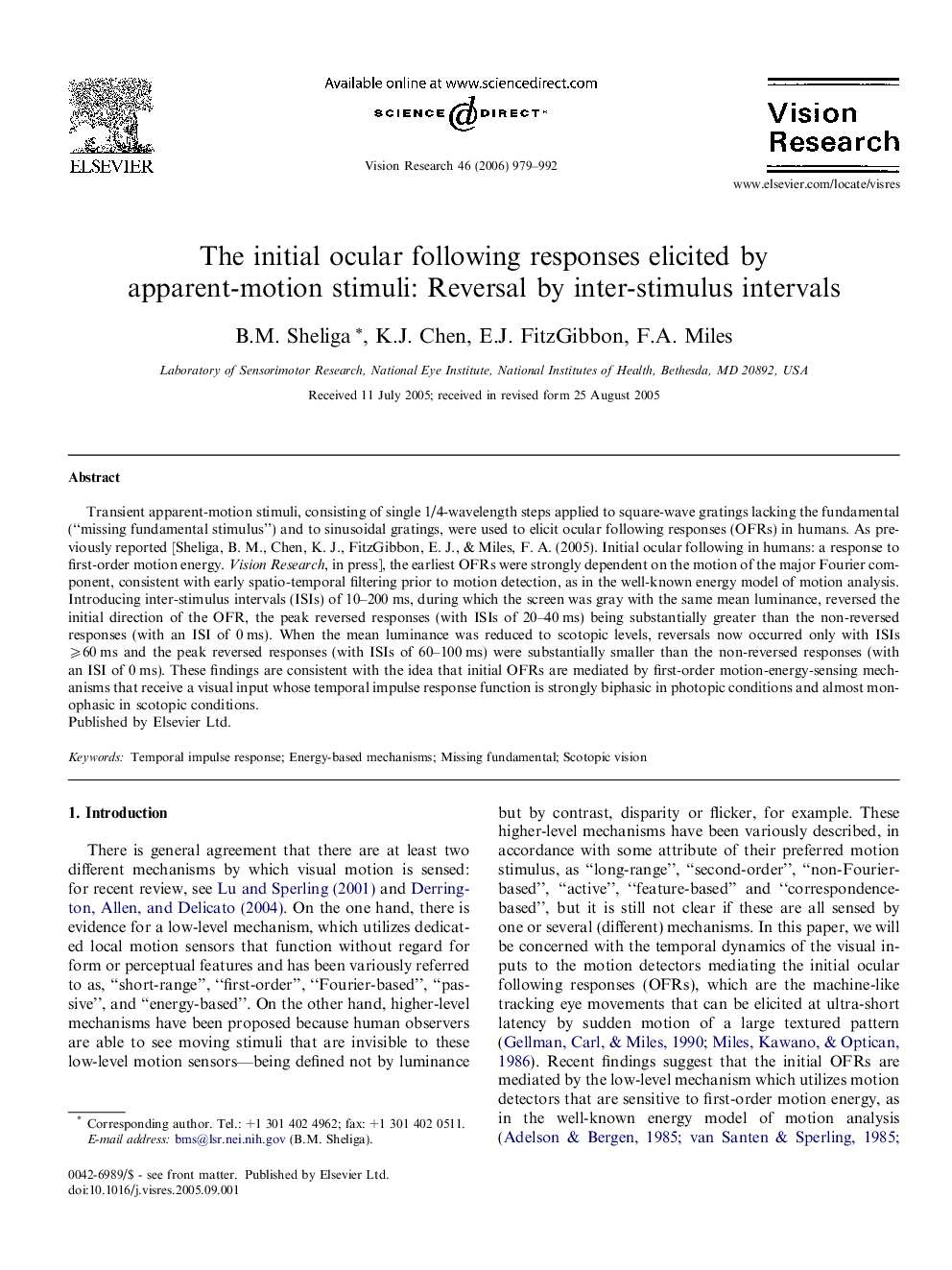| Article ID | Journal | Published Year | Pages | File Type |
|---|---|---|---|---|
| 4036356 | Vision Research | 2006 | 14 Pages |
Transient apparent-motion stimuli, consisting of single 1/4-wavelength steps applied to square-wave gratings lacking the fundamental (“missing fundamental stimulus”) and to sinusoidal gratings, were used to elicit ocular following responses (OFRs) in humans. As previously reported [Sheliga, B. M., Chen, K. J., FitzGibbon, E. J., & Miles, F. A. (2005). Initial ocular following in humans: a response to first-order motion energy. Vision Research, in press], the earliest OFRs were strongly dependent on the motion of the major Fourier component, consistent with early spatio-temporal filtering prior to motion detection, as in the well-known energy model of motion analysis. Introducing inter-stimulus intervals (ISIs) of 10–200 ms, during which the screen was gray with the same mean luminance, reversed the initial direction of the OFR, the peak reversed responses (with ISIs of 20–40 ms) being substantially greater than the non-reversed responses (with an ISI of 0 ms). When the mean luminance was reduced to scotopic levels, reversals now occurred only with ISIs ⩾60 ms and the peak reversed responses (with ISIs of 60–100 ms) were substantially smaller than the non-reversed responses (with an ISI of 0 ms). These findings are consistent with the idea that initial OFRs are mediated by first-order motion-energy-sensing mechanisms that receive a visual input whose temporal impulse response function is strongly biphasic in photopic conditions and almost monophasic in scotopic conditions.
